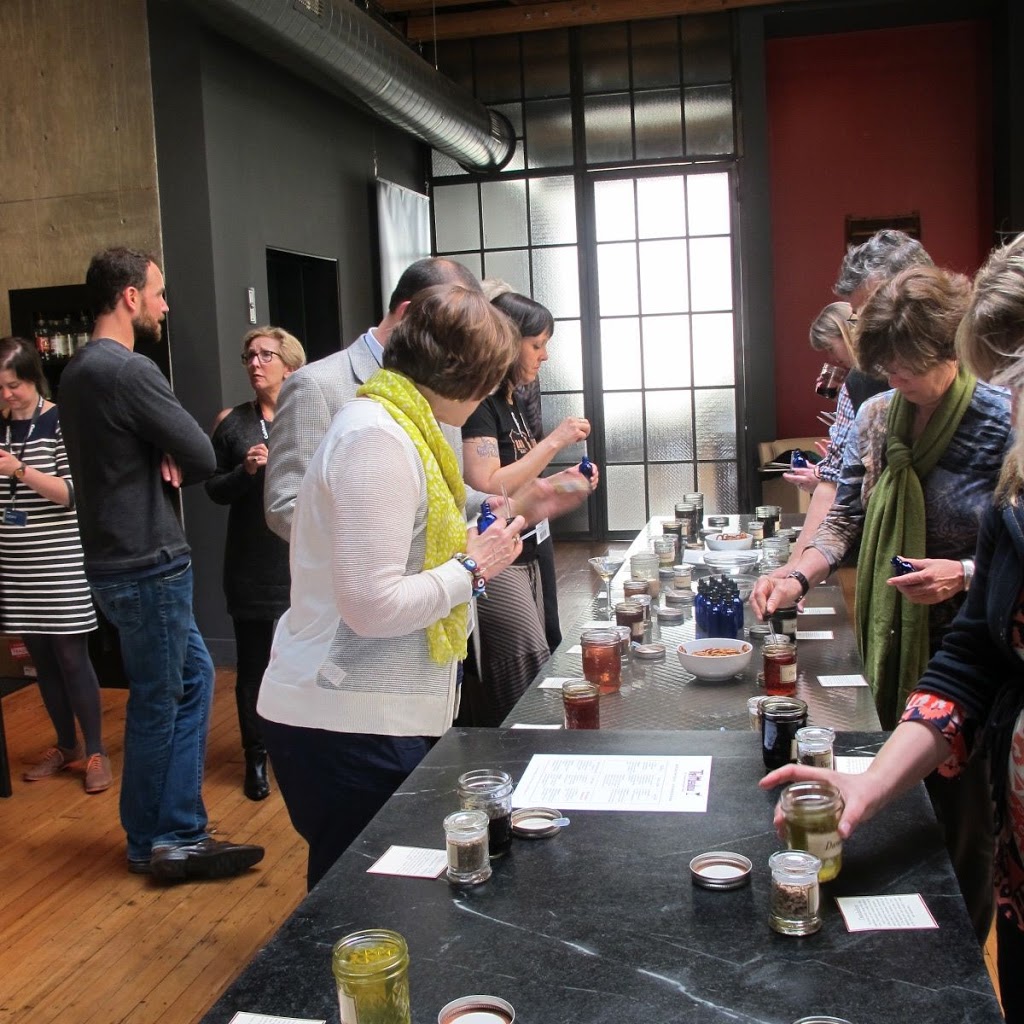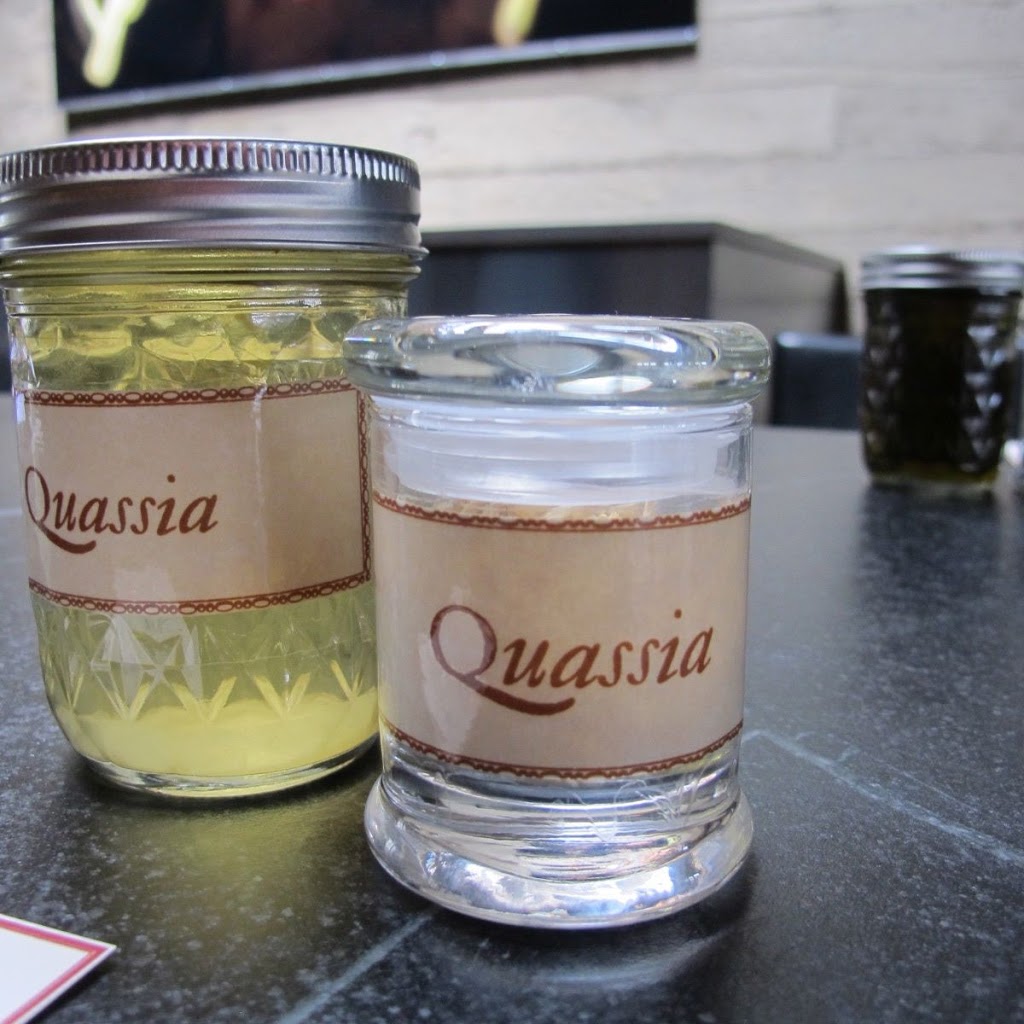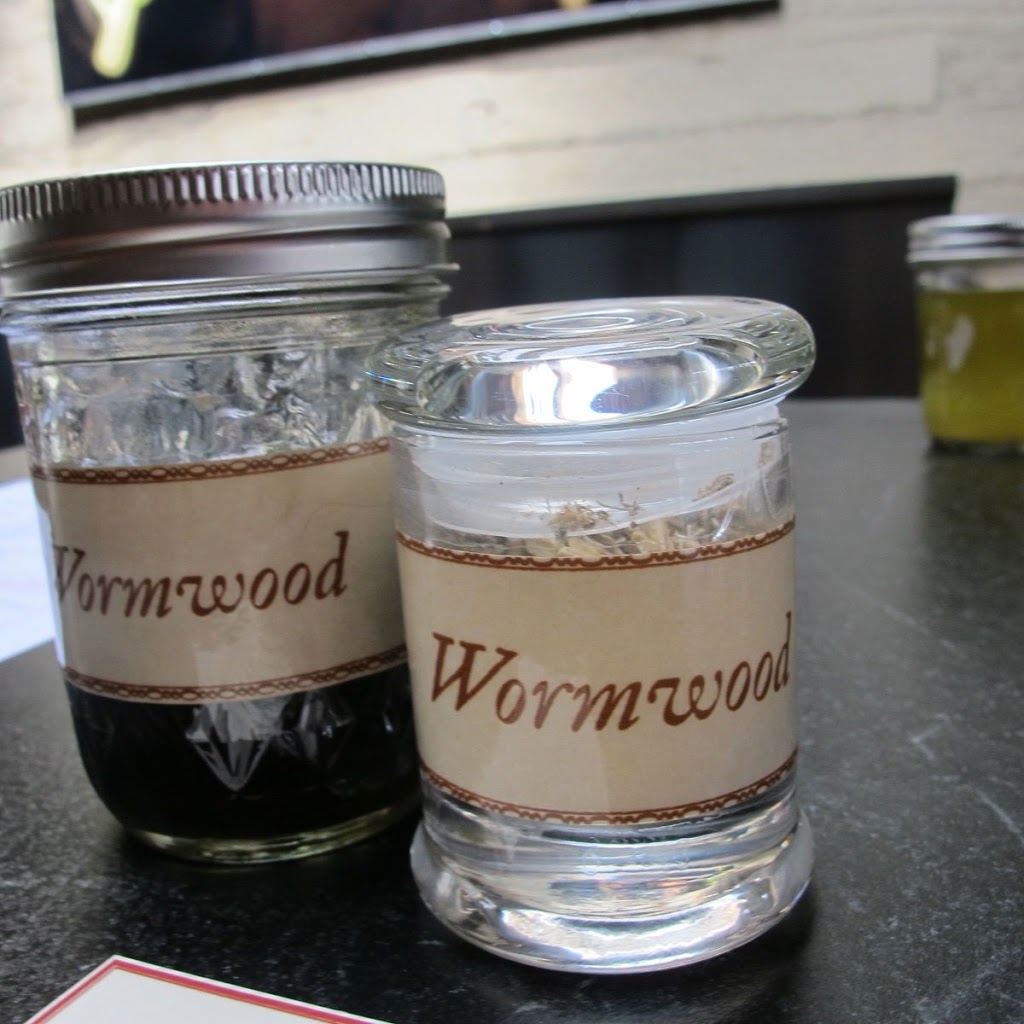At the IACP convention in San Francisco this year, I attended one of the pre-conference workshops on Build You Own Bitters, with Mark Bitterman of The Meadow, a shop in Portland, Oregon and also in New York City.
I adore the alchemy of cooking and living in Europe have become passionate about making my own liquores and bitters, amari in Italian. Europe has a huge history of using plants and herbs as flavorings and also for their digestive powers.
We met in Noel Barnhurst’s fabulous photography studio for our workshop.
Mark came prepared with a huge selection of essences and tinture for us to blend our own bitters, over 20 different aromatic roots, barks, spices, fruits and herbs.
Each one of the bottles for the tinctures for making the bitters had a small apothecary jar of the original ingredient for us to see and smell. The name and description of each essence was on the table in front of the jar.
Mark gave us all small bottles with droppers and had us create our own blends, based on our palates. 
Starting with the milder essences, to build up and then add very little of the more bitter of the ingredients which were at the other end of the long table.
 Mad Scientists at work
Mad Scientists at work
 There were: Tea, Coffee and Chocolate
There were: Tea, Coffee and Chocolate
 Flowers like Hibiscus and Rose
Flowers like Hibiscus and Rose
 Aromatics: Fennel Seed, Juniper Berries, Cinnamon, Cloves, Ginger
Aromatics: Fennel Seed, Juniper Berries, Cinnamon, Cloves, Ginger
 Gentian helps with feeling blue— MUST have that!
Gentian helps with feeling blue— MUST have that!
 Some interesting plants, Quassia, Devil’s Club, Sassafras
Some interesting plants, Quassia, Devil’s Club, Sassafras Wormwood is one of the ingredients in making Absinthe.
Wormwood is one of the ingredients in making Absinthe.
 Mark has two different ways to use the bitters for us to try. One an Old Fashioned, bourbon, sugar and bitters and the French 75. We used prosecco, vodka instead of gin, sugar and then our own “bitters”.
Mark has two different ways to use the bitters for us to try. One an Old Fashioned, bourbon, sugar and bitters and the French 75. We used prosecco, vodka instead of gin, sugar and then our own “bitters”.


By the end of class, we were all in Bitter’s Bliss.
To create your own tinctures as a base for creating your own bitters, you infuse the ingredients in whole grain alcohol. The drops are used in tiny quantities and then diluted with distilled water. The tinctures become even more diluted when added to the cocktail itself.
There are many online shops to access some of these harder to find barks, herbs, blossoms and spices.
In researching when I got home, there are even kits available to make your own bitters at home. Sort of a starter kit.
One of my favorite things to make are fortified wines, common in France and Italy for an aperitivo.
Here is an interesting link for you to start making your own.
I hope you can begin to blend your own.
Mark’s presentation was inspiring and creative. Now I think my kitchen will begin to look more and more like a pharmacy!
Note: my own blend at class was spicy with cinnamon, clove, orange zest, hibiscus and the bitter element was quinine bark, woodworm and gentian. I played around adjusting until I was happy with the balance.





First – and quite possibly foremost – your photographs are great. Honest. You should be so very pleased. They are sharp and true, AND engaging. Plus they really make me want to say “I’ll have what she is having.”
After reading this post, I realize I must get out more. I love knowing that we can do this at home. I read the Bitters book, and saw many recieps there, but was somehow not inspired to get going. You have changed that. As always, Judy, thanks.
I wish I had attended this workshop too, it looks great!
I can imagine how exciting it was. I also enjoy the appeal of the bitter taste plus the spicy flavor. BTW, I love the photos and will definitely try Lapsang one of these days.